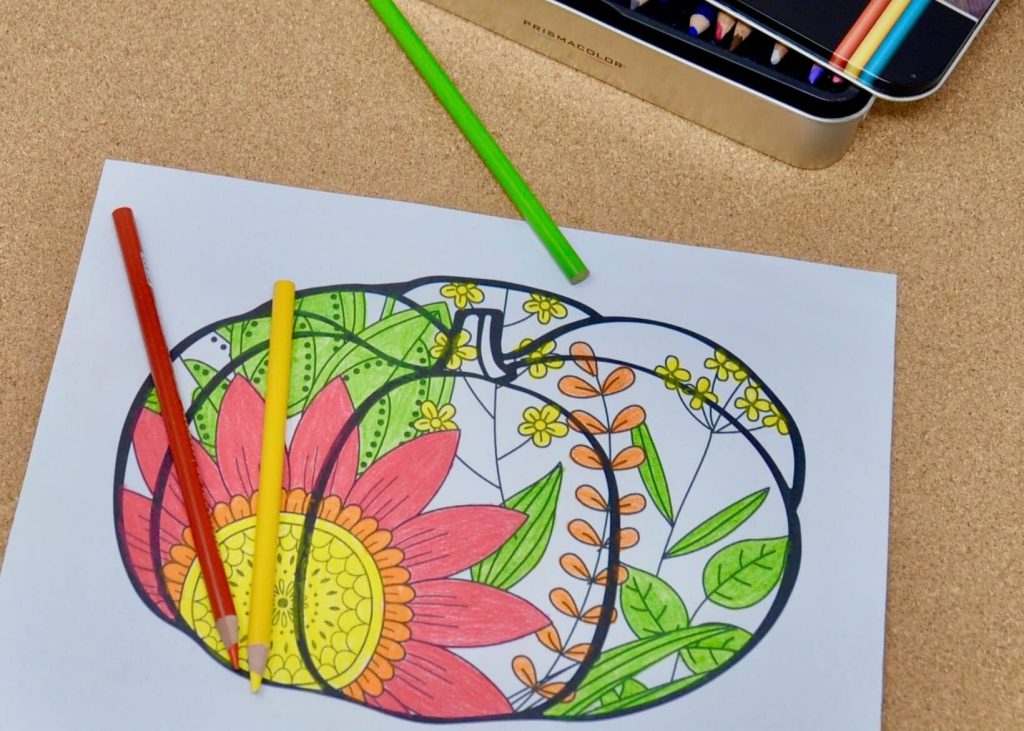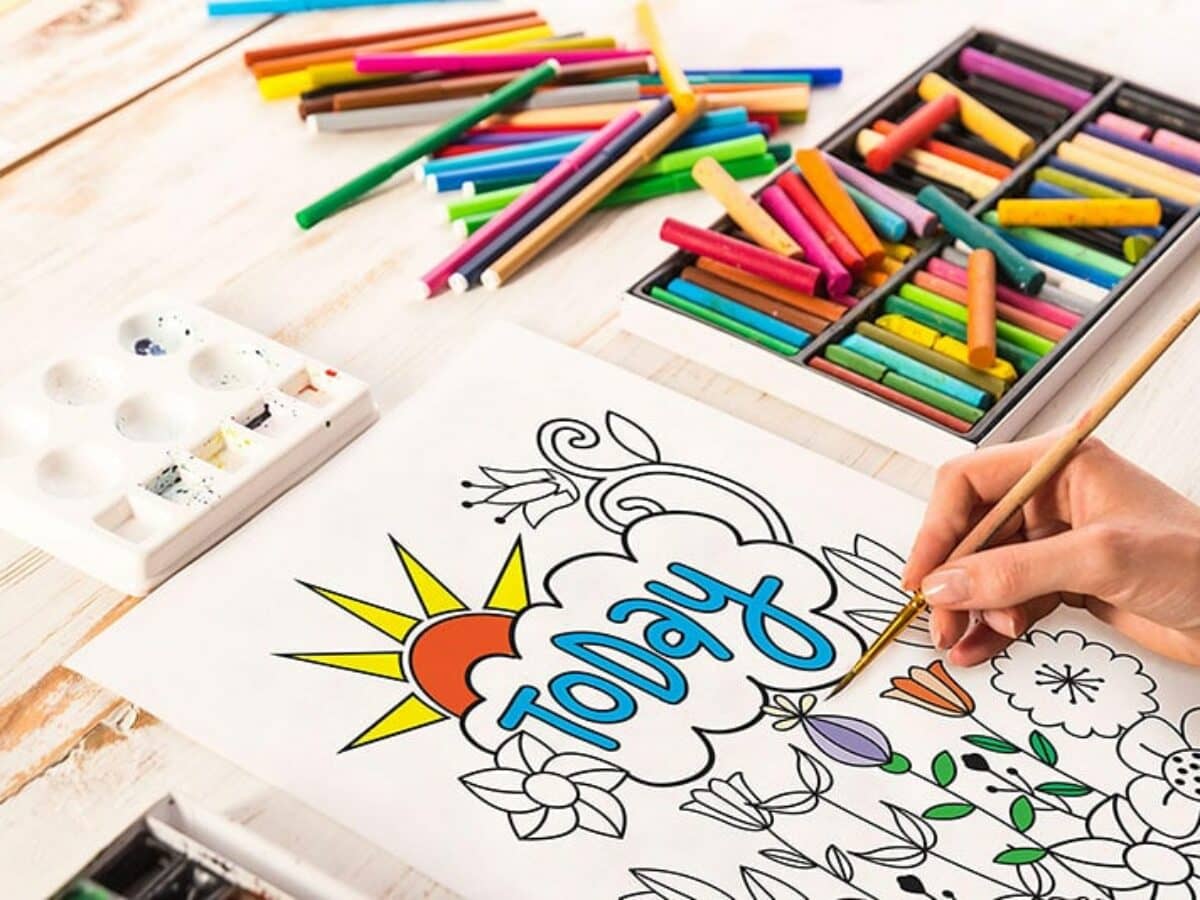
Dementia Friendly Easy Coloring Pages for Dementia Patients
In this article from humanhealthmag, we are going to learn about dementia friendly easy coloring pages for dementia patients.These types of coloring pages are designed to be easy and enjoyable for people with dementia. They usually have large, clear images with thick lines and use simple, limited colors.
Effects of Dementia Friendly Easy Coloring Pages for Dementia Patients
Art is effective on the mind. It deals with the feelings of its creator more than the external beauty. Maybe you have seen the painting Starry Night by Van Gogh (famous painter) and it provokes a feeling of despair in you. Over the years, you may not remember the exact details of the painting or the lyrics, but the feeling it gave you is still alive. This is because the amygdala (the brain’s emotional center) is located just before the hippocampus (the part responsible for long-term memory storage).
This is how art-based therapies can help the elderly’s mental faculties. Art therapy in the elderly communicates through emotions and evokes personal memories of the elderly. Showing older people photos from the past can trigger mental responses, but asking them to draw a picture of that photo may bring their emotions to life and help them recall forgotten memories.

Art Therapy Increases Brain Stimulation in the Elderly
As we said above, dementia friendly easy coloring pages for dementia patients is very effective in treating this type of patients.Can you believe that some dementia patients may not be able to remember memories but can still do artistic skills like drawing and playing an instrument? This is related to muscle memory capabilities, which are developed in art therapy in the elderly.
Art therapy-based therapies in the elderly with Alzheimer’s disease do not eliminate dementia, but provide interventions that may slow down the process of dementia. Slow down the memory.
When areas in the “logic brain” (which handles logic, language, and reasoning) are damaged, the “art brain” processes the information. It carries it to the left brain to stimulate memory and thinking. Simply put, art helps the mind find a new way of communication. This is how art forms, such as melodies and colors, stimulate brain activity in areas that lose meaningful memories.
Dementia Friendly Easy Coloring Pages for Dementia Patients Leads to Social Interactions
Dementia is difficult because it deprives the elderly of basic physiological functions as well as social interactions. Loss of sensation is associated with the onset of dementia. The elderly may often be separated and isolated from their surroundings. Because art therapy sessions in the elderly can rekindle emotional feelings, they also evoke responses. Some seniors who are unable to speak may begin to communicate verbally.
Under the influence of the emotions they have gained from their artistic works, these elderly people present reactions that improve their social skills. In such a situation, these emotional reactions can be transferred to the elderly people around them in art meetings and in turn itself, lead to the creation of social interactions.
Know more: Alzheimer’s Disease is changes in the brain and the most common cause of dementia that gradually affects memory loss.What are the positive effects of free short stories for dementia patients?

The Benefits of Coloring for Seniors Health
What is benefits of easy coloring activities for alzheimer’s and dementia patients? They can:
Increases physical strength and skill
The participation of elderly people with Alzheimer’s disease in artistic activities from the simplest to the most complex causes hopeful movements. Artistic practice stimulates the parietal lobe of the brain, which is responsible for balanced motor functions. Older adults maintain brain-hand interaction through hand exercise, which improves motor skills and muscle coordination.The amount and extent of physical movements is not important, but continuous movement maintains muscle function and strengthens overall physical strength.
It improves mood and general mood
Loneliness, anxiety, and depression are feelings that often accompany the progression of dementia. When their language skills weaken due to this disease, the elderly are unable to express their feelings and suffer behavioral and psychological problems. They may also be caught up in the crippling anxiety of Alzheimer’s or become depressed due to reduced mobility. This is where art therapy is vital for the elderly.
By presenting a visual image or painting, patients are given the opportunity to vent their negative emotions. Art therapy in the elderly also evokes positive emotions. For the elderly who do not have verbal abilities, art can make them smile, laugh, talk or move. which, in turn, improves the general condition and quality of life of the elderly.
Art therapy in the elderly causes a feeling of success
Using creativity can enhance a sense of purpose and achievement among elderly people with Alzheimer’s disease. Whether or not they are given the freedom to mix watercolors or paint, having something to focus on promotes independence, mastery, and a sense of purpose. In the end, a canvas with a completed design can give the senior a great sense of accomplishment.
This artwork gives the senior a sense of pride, knowing they can share the art with others. Art therapy in the elderly increases the sense of self-confidence and sense of personality among the elderly.
Read more: What kind of tone is appropriate for funny retirement messages for boss?
Concluding Remarks
Dementia friendly easy coloring pages for dementia patients is an excellent way to treat Alzheimer’s patients. Generally Art therapy sessions for the elderly with Alzheimer’s who are under care is considered a great relief from the boring life caused by their lack of disabilities. Whether they suffer from other chronic diseases or dementia, changing the environmental conditions and the beauty of art alone can have effective therapeutic effects on their disease.
FAQs
What is meant by dementia friendly easy coloring pages for dementia patients?
Coloring pages are among the best therapeutic activities for Alzheimer’s patients. The purpose of these activities is to engage, stimulate and relax the mind of the patients.They usually have large, clear images with thick lines and use simple, limited colors.
What colors are suitable for people with dementia?
It has been proven that green color reduces the activity of the central nervous system and creates a sense of relaxation in patients. Like red, green can make a small room look bigger when painted on the wall. Most importantly, lime green is a vibrant color that the eye can see as it ages. As a result, Alzheimer’s patients should use more green color in their coloring.
Is coloring good for dementia patients?
Coloring can be a great way to improve mood and bring comfort to those with Alzheimer’s disease or other types of dementia. For example, studies have shown that coloring and drawing help increase serotonin levels in the brain, which is directly linked to improved mood.
Do dementia patients like coloring books?
Coloring can be very helpful for people with dementia, as it is an engaging activity that anyone can do.
